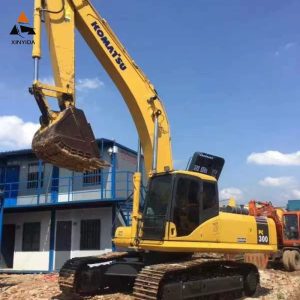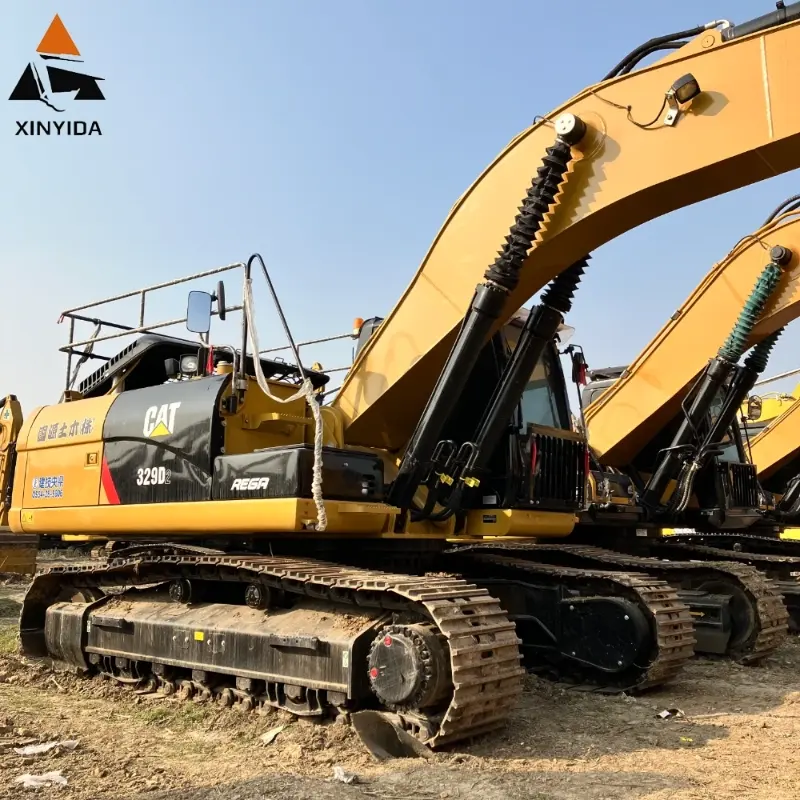Utilisation d'une excavatrice : un guide complet pour une utilisation sûre et efficace
Release time: 2025-03-04
Excavator operation is essential in industries like construction, mining, landscaping, and demolition. Understanding how to operate an excavator safely and efficiently is key to maximizing productivity and minimizing risks. Whether you’re a beginner or an experienced operator, mastering excavator operation techniques is vital for safe, effective work. This comprehensive guide covers essential safety tips, best practices for efficient operation, and the skills needed to get the most out of your excavator.
What is an Excavator?
An high-quality excavator is a large piece of machinery commonly used for digging, lifting, and moving large amounts of material. Excavators play a critical role in construction, mining, and various heavy-duty tasks. They consist of a rotating platform, a boom arm, a bucket, and a cab for the operator. Understanding these components is essential for ensuring smooth and safe operation.
Basic Excavator Components
Before operating an excavator, it’s crucial to understand its basic components and how they work:
- Boom Arm: The long arm attached to the excavator’s body that extends to reach and move material.
- Bucket: The large scoop at the end of the boom arm used for digging and scooping material.
- Tracks: These provide mobility to the excavator and enable it to navigate rough terrain.
- Cab: The operator’s compartment, where the controls are located.
- Stick: A secondary arm that connects the bucket to the boom, providing greater reach.
Understanding these components helps you control the machine more effectively and safely.
Excavator Safety Tips
Operating an excavator safely should be your top priority. Follow these safety tips to reduce the risk of accidents and ensure a safe working environment:
1. Wear Proper PPE (Personal Protective Equipment)
Always wear safety gear, including a hard hat, high-visibility vest, steel-toed boots, and gloves. Safety glasses or goggles are also recommended.
2. Inspect the Excavator Before Use
Always perform a pre-operation inspection of the machine. Check the hydraulic system, boom arm, bucket, and tracks for any signs of damage or wear.
3. Understand the Surroundings
Before starting work, survey the area for potential hazards such as nearby power lines, uneven ground, or hidden obstacles.
4. Never Allow Passengers
Excavators are designed for one operator. Never carry passengers or let people near the machine while it’s in operation.
5. Use Seat Belts
Always wear the seat belt while operating the excavator. This keeps you securely in place, even during sudden movements.
Efficient Excavator Operation Techniques
Mastering the right operation techniques can significantly improve your productivity and help avoid unnecessary wear on the machine. Here are some tips for operating an excavator efficiently:
1. Smooth, Controlled Movements
Use smooth, controlled movements when operating the boom, stick, and bucket. Rapid movements can lead to spills and inefficient digging.
2. Maximize Bucket Capacity
Fill the bucket to its optimal capacity to reduce the number of cycles. However, be mindful of weight limits to avoid straining the machine.
3. Work in Short Bursts
Avoid long, continuous digging. Working in shorter bursts allows the machine to perform more efficiently and reduces overheating.
4. Dig with the Right Angle
Always dig at an appropriate angle to avoid excessive strain on the arm and hydraulic systems. A shallow angle works best for most tasks.
5. Use the Right Attachments
Choose the right attachments for the job, whether it’s a bucket, grapple, or auger. The proper attachment ensures efficient material handling and minimizes machine strain.
Common Excavator Operation Mistakes and How to Avoid Them
Even experienced operators make mistakes. Here are some common errors and how to avoid them:
1. Overloading the Bucket
Overloading can cause the machine to tip or strain the hydraulic system. Always stick to the machine’s load limits.
2. Improper Boom and Stick Usage
Using the boom and stick incorrectly can cause damage to the excavator and affect its performance. Practice proper techniques for different tasks.
3. Neglecting the Terrain
Failing to consider the terrain can result in unstable operation. Always assess the ground before starting work to avoid tipping or getting stuck.
4. Operating Too Quickly
Operating an excavator too quickly can cause loss of control. Focus on precision and smooth operation rather than speed.
Excavator Maintenance for Longevity
Proper maintenance extends the life of your excavator and ensures it runs efficiently. Follow these maintenance tips to keep your construction machine in top condition:
1. Regular Oil Changes
Check and change the oil regularly to ensure smooth operation. Oil should be changed according to the manufacturer’s recommendations.
2. Inspect Hydraulic Systems
Hydraulic systems are crucial for excavator operation. Regularly check for leaks, worn hoses, and any signs of fluid loss.
3. Clean the Tracks
Tracks should be cleaned regularly to prevent dirt buildup. This helps prevent unnecessary wear and tear on the undercarriage.
4. Check the Battery and Wiring
Ensure that the battery is securely fastened and that wiring is free from damage. Clean and tighten connections as needed.

Mastering excavator operation is essential for ensuring safety, efficiency, and productivity. By following the safety tips, practicing efficient operation techniques, and maintaining your machine, you can ensure your excavator serves you for years to come. Always prioritize safety and take the time to understand the equipment you’re using—this will help you avoid common mistakes and work more effectively.

.png) +8619966547928
+8619966547928.png) ibettyfromxinyida@gmail.com
ibettyfromxinyida@gmail.com.png)


